
Pleurophyllum is a genus of subantarctic plants in the tribe Astereae within the family Asteraceae.

Poa foliosa is a species of tussock grass commonly known as muttonbird poa. It is native to the subantarctic islands of New Zealand and Australia.

Cardamine corymbosa, commonly known as the New Zealand bitter-cress, is a flowering plant in the family Brassicaceae. Native to the subantarctic islands of Australasia, it has become an invasive species in plant nurseries. The specific epithet refers to the structure of the inflorescence.
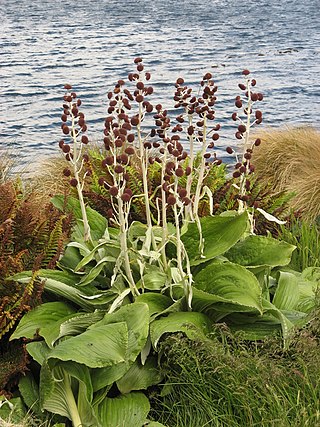
Pleurophyllum criniferum is a species of flowering plant in the family Asteraceae that is endemic to the subantarctic islands of New Zealand.

Leptinella plumosa is a small flowering plant in the daisy family. It is a circumantarctic species found on many subantarctic islands in the Southern Ocean. The specific epithet comes from the Latin for “feathery”, referring to the form of the leaves.
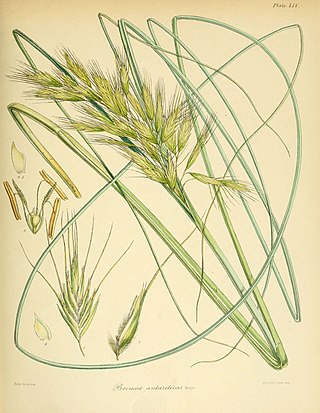
Chionochloa antarctica is a species of grass, endemic to the Auckland and Campbell Islands.

Anthoxanthum brunonis is a species of grass, native to the South Island of New Zealand and to the Auckland and Campbell Islands.
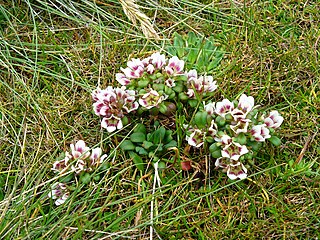
Gentianella concinna is a flowering plant species, endemic to the Auckland Islands of New Zealand.

The Flora Antarctica, or formally and correctly The Botany of the Antarctic Voyage of H.M. Discovery Ships Erebus and Terror in the years 1839–1843, under the Command of Captain Sir James Clark Ross, is a description of the many plants discovered on the Ross expedition, which visited islands off the coast of the Antarctic continent, with a summary of the expedition itself, written by the British botanist Joseph Dalton Hooker and published in parts between 1844 and 1859 by Reeve Brothers in London. Hooker sailed on HMS Erebus as assistant surgeon.

Anisotome antipoda is a species of flowering plant in the family Apiaceae, which is endemic to the Auckland, Campbell and Antipodes Islands.

Azorella schizeilema is a species of cushion plant in the Apiaceae family, native to the Auckland and Campbell Islands.

Abrotanella rosulata is a plant in the family Asteraceae, endemic to the Campbell Islands.

Myosotis capitata is a species of flowering plant in the family Boraginaceae, endemic to the Campbell and Auckland Islands of New Zealand. Joseph Dalton Hooker described the species in his 19th century work Flora Antarctica. Plants of this species of forget-me-not are perennial and erect, and have ebracteate inflorescences and blue corollas. It is one of two native species of Myosotis in the New Zealand subantarctic islands, the other being M. antarctica, which can also have blue corollas.

Plantago aucklandica is a species of flowering plant in the family Plantaginaceae that is endemic to the subantarctic Auckland Islands, New Zealand. Joseph Dalton Hooker described P. aucklandica in his Flora Antarctica in 1844. Plants of this plantain are large with large leaves, up to seven veins, wide petioles, colliculate seeds, and long spikes with dozens of flowers and one-seeded fruits. This species in considered to be At Risk - Naturally Uncommon, as it is an island endemic with a restricted range.
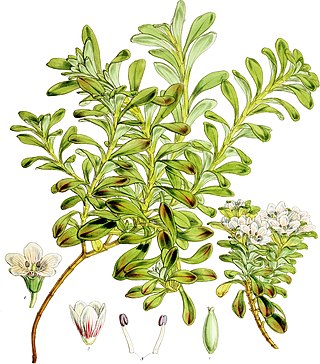
Gentianella cerina is a plant species in the Gentianaceae family, endemic to the Auckland Islands of New Zealand.

Carex erebus is a member of the sedge family and is found on the Antarctic Islands of Australia and New Zealand.

Leptinella lanata is a small flowering plant in the daisy family, native to the Antipodean Islands. Its specific epithet, lanata, describes its woolly-haired (lanate) rhizomes.
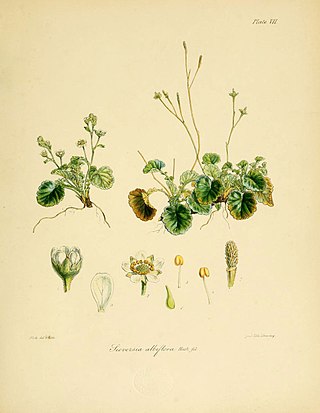
Geum albiflorum is a plant in the rose family, Rosaceae family, found in the Auckland Islands.

Helichrysum pumilum, commonly known as dwarf everlasting, is a rosette herb from the family Asteraceae. It is endemic to Tasmania, where it is commonly found in the West and Southwest of the island state. It is distinctive by its inflorescence, with the flower stalk being densely matted in fine white hairs and the daisy-like flower head having numerous pink or white ray floret-like bracts.

Celmisia verbascifolia is a species of daisy that is endemic to New Zealand. It was first described by Joseph Dalton Hooker in 1853.





















